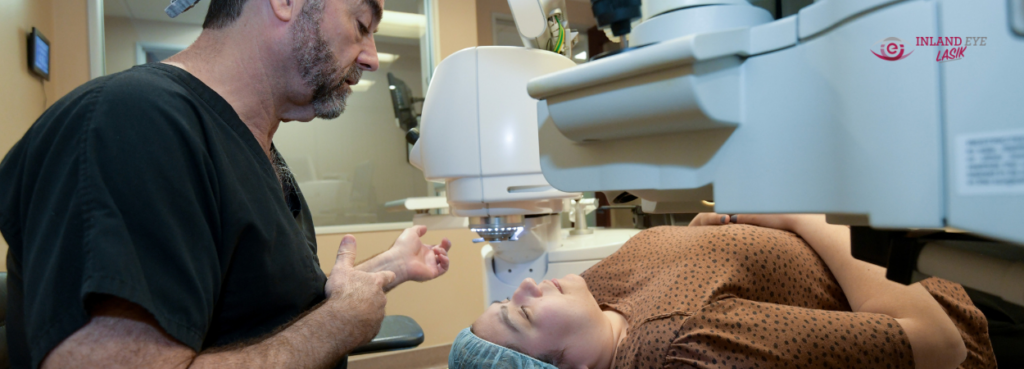
Glaucoma Awareness Month provides an essential platform to shed light on the challenges faced by individuals with glaucoma and explore safe, effective solutions for vision improvement. While traditional LASIK surgery might not be suitable for some glaucoma patients due to its potential impact on intraocular pressure (IOP), Photorefractive Keratectomy (PRK) offers a promising alternative for those seeking refractive correction without compromising their glaucoma management.
What is PRK?
Photorefractive Keratectomy (PRK) is a laser vision correction procedure designed to reshape the cornea and correct refractive errors such as nearsightedness, farsightedness, and astigmatism. Unlike LASIK, PRK does not involve the creation of a corneal flap, making it a safer option for patients with glaucoma or those who have thin corneas.
Why PRK is a Safer Option for Glaucoma Patients?
- No Corneal Flap Creation
LASIK involves creating a corneal flap, temporarily increasing IOP, which can pose risks for glaucoma patients by potentially worsening optic nerve damage. PRK eliminates the need for a corneal flap by gently removing the outermost layer of the cornea (epithelium), thus avoiding IOP spikes.
- Minimal Impact on IOP Measurement
PRK’s lesser impact on corneal thickness facilitates more accurate post-surgical IOP readings. Reliable IOP measurements are vital for ongoing glaucoma management, ensuring that the condition remains under control. - Suitability for Thin Corneas
Many glaucoma patients have thinner corneas, making them unsuitable candidates for LASIK. PRK requires less corneal tissue, providing a viable refractive correction option for those with thin or structurally delicate corneas. - Lower Risk of Long-Term Complications
Since PRK does not involve a flap, it reduces the risk of complications such as flap displacement or infection, which can be especially concerning for glaucoma patients needing regular eye examinations and treatments.
What to Expect with PRK?
- Pre-Operative Exam:
– During the pre-op exam for refractive surgeries like PRK and LASIK, the eye is carefully tested to measure the intraocular lens (IOL).
– This measurement ensures the IOL is within the normal range, helping to determine the best approach for the surgery. - Procedure Overview:
– The surgeon gently removes the cornea’s outer layer (epithelium).
– A laser precisely reshapes the cornea to correct refractive errors.
– A protective contact lens is placed over the eye to aid the healing process. - Healing and Recovery:
– PRK typically has a longer recovery period compared to LASIK. Initial vision improvement can be noticed within a few days, but full stabilization may take several weeks.
– Patients may experience mild discomfort and light sensitivity during the healing phase, which gradually subsides. - Post-Operative Care:
– Regular follow-up visits are essential to monitor healing and ensure that the vision correction is progressing as expected.
– Glaucoma patients will continue their routine glaucoma care alongside PRK recovery to maintain optimal eye health.
Empowering Glaucoma Patients with Clearer Vision.
PRK presents a safe and effective alternative for glaucoma patients looking for refractive correction options. By avoiding the risks associated with increased IOP and preserving corneal integrity, PRK supports continuous glaucoma management while offering the benefits of improved vision.
If you or someone you know has glaucoma and is considering refractive surgery, consult with an ophthalmologist or refractive surgeon to discuss the best personalized solutions. If you don’t already have a provider or ophthalmologist, our sister practice Pacific Eye Institute is here in the Inland Empire with multiple locations.
Together, we can enhance awareness and provide tailored care to meet the unique needs of glaucoma patients during Glaucoma Awareness Month and beyond.









